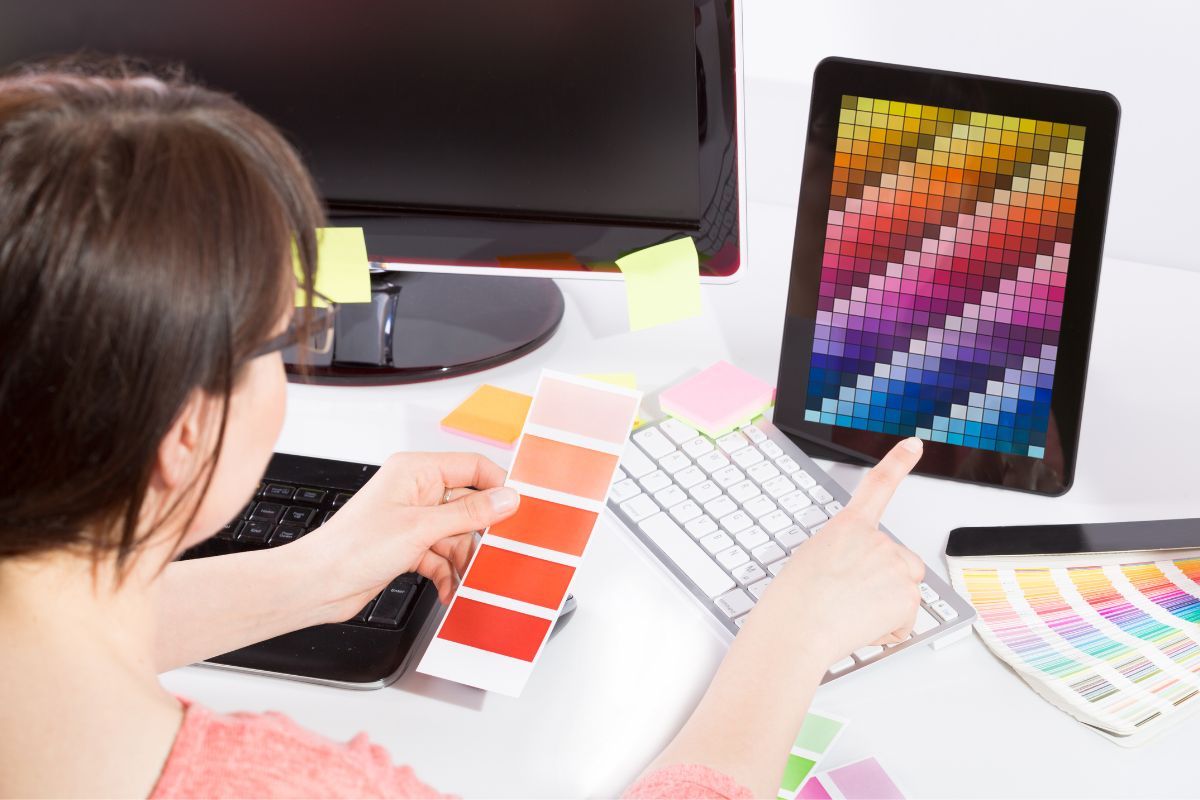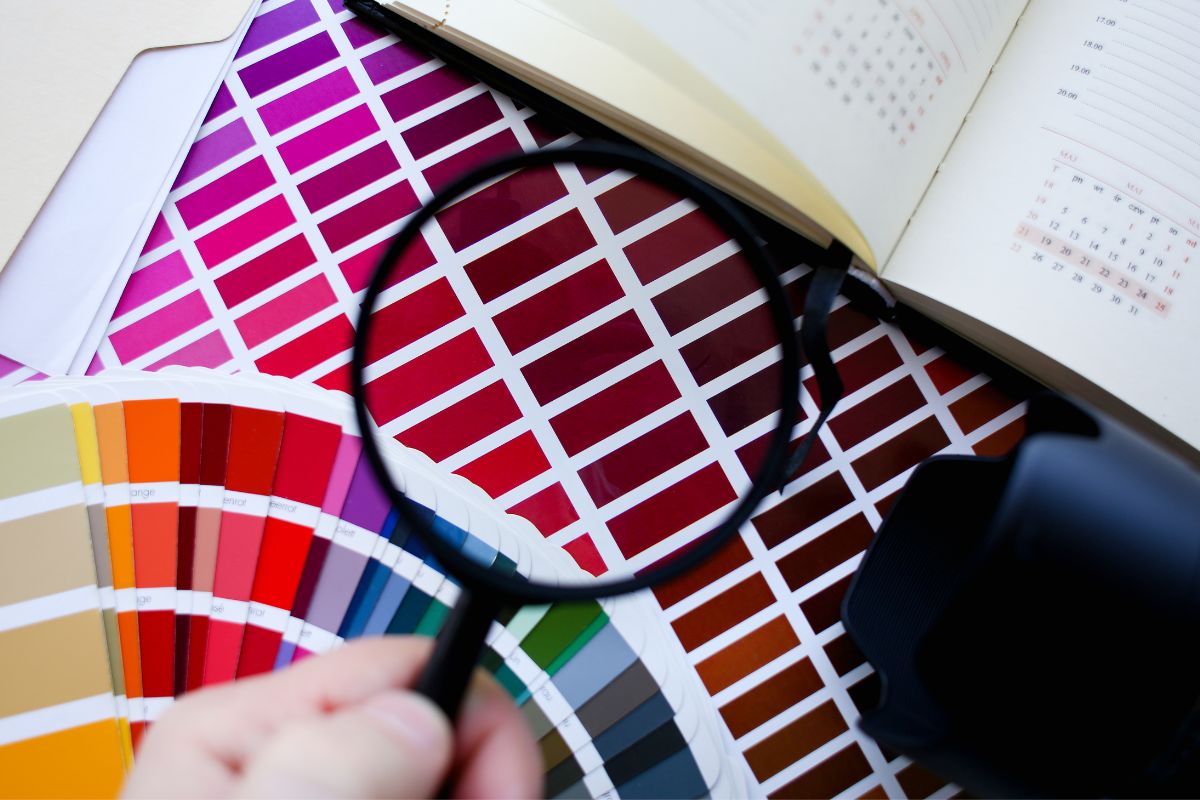Converting Pantone colors to Hex codes is a critical task for designers and developers who aim to maintain color consistency across various media. Pantone is a standardized color matching system that allows for the precise replication of colors, while Hex codes are used in digital design to represent colors on screens. Your ability to translate Pantone colors, widely used in printing and graphic arts, into Hex values ensures your designs remain true to your original color choices when viewed online.
To accurately convert a Pantone color to its Hex equivalent, you need access to a reliable color chart or conversion tool. The process can be straightforward, but it’s essential to understand that because Pantone colors are based on ink formulas for printing, while Hex codes depend on light display, some colors may not have an exact match. Your aim will be to find the closest possible Hex representation of your Pantone color, keeping in mind that the final output may slightly vary depending on the medium. Tools like the Pantone Color Manager can be a great asset in making these conversions with precision.
Understanding Color Systems
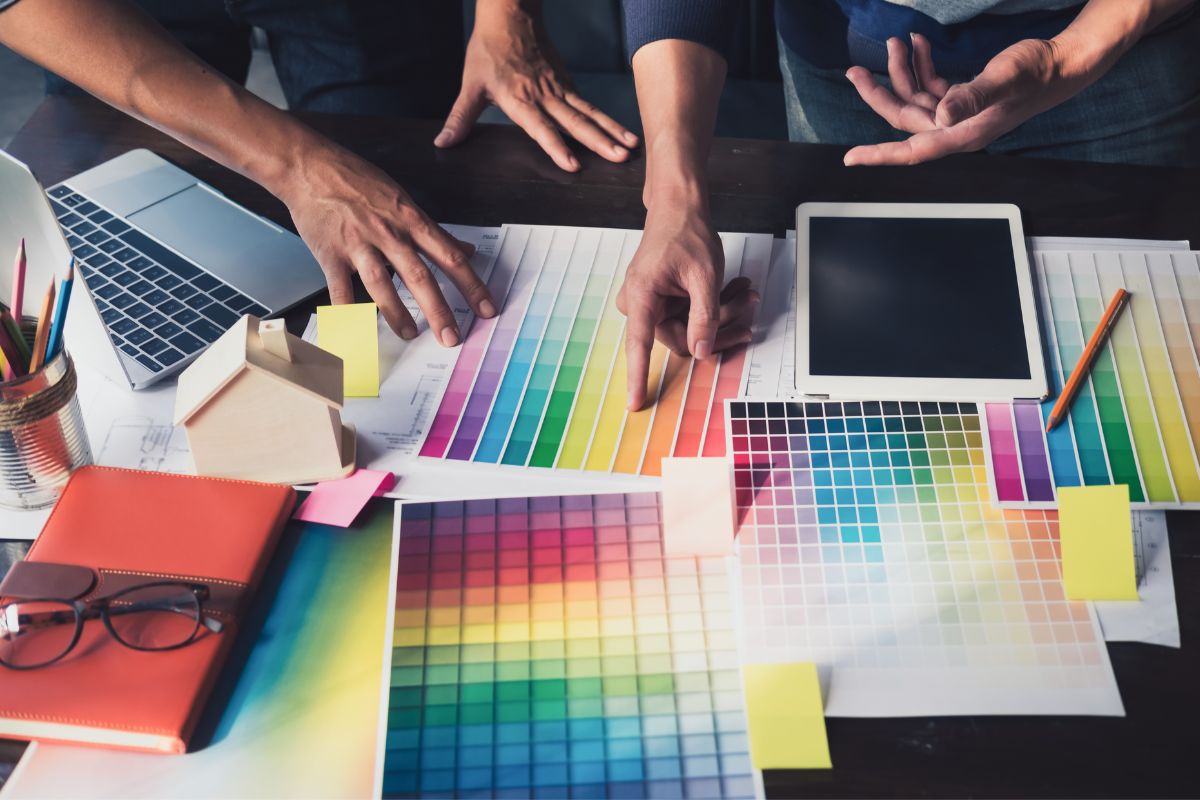
When converting Pantone to Hex, it’s crucial you understand the different color systems and how they relate to each other. This involves grasping the fundamentals of Pantone as a color matching system, recognizing what Hexadecimal colors are, and knowing how RGB and CMYK serve as key color models in digital and print design, respectively.
Overview of Pantone
The Pantone Color System is an industry-standard color matching system that ensures consistency across various materials and platforms. As a part of color theory, Pantone provides a unique code for every shade, facilitating color codes communication among designers, manufacturers, and clients. When you see a Pantone color, it’s a specific mixture of inks defined by the system, which aims for the colors to appear the same across different products and prints.
Introduction to Hexadecimal Colors
Hexadecimal colors, or hex codes, represent colors on the web. A hex code begins with a hash symbol (#) followed by six digits or letters. This code is a representation of RGB color model values, where two digits for red, green, and blue are combined to create a spectrum of colors. A hex converter tool is often used to translate RGB values or Pantone colors into hex format so they can be accurately displayed on digital screens.
RGB and CMYK Color Models
RGB (Red, Green, Blue) and CMYK (Cyan, Magenta, Yellow, black) are essential in understanding digital and print color schemes. The RGB color model is used in electronic displays where colors are created with light. Meanwhile, CMYK is the color model for print that involves a subtractive process where colors become darker as you blend them. For precise color matching, you’ll often convert between these models, and tools like a Pantone to RGB converter can streamline your workflow.
The Conversion Process
When converting Pantone to HEX for web design, it’s important to understand color models and utilize accurate conversion tools to ensure consistency across digital platforms.
Direct Conversion Methods
Pantone refers to a color space used by designers and printers to specify a wide range of colors. HEX, a shorthand for hexadecimal, is a color code that represents a specific color in web design. To convert a Pantone color to its HEX equivalent, you must match the color’s hue and saturation as closely as possible, considering that Pantone is optimized for print and HEX for digital displays.
- Red, green, and blue are primary colors in both the Pantone and HEX color models.
- White, gray, and black are achromatic colors represented without saturation.
Understanding Color Values
Each color in the Pantone system has a unique identifier, which corresponds to a set of CMYK values that can simulate the color in print. HEX values, on the other hand, are expressed as six-digit combinations of numbers and letters, corresponding to the levels of red, green, and blue.
- Pantone 300 might be represented in HEX as #005EB8 (not an exact match).
- An exact match is rarely possible due to different color gamuts of Pantone (physical) and HEX (light-based).
Utilizing Conversion Tools
Converting Pantone to HEX can be tricky, but there are online tools that can assist:
- A color converter tool can quickly provide a close HEX approximation for a Pantone value.
- Using a HEX converter or an integrated color picker within a design software can streamline your workflow.
- An online tool or plugin might offer batch conversion features, which are useful in processing multiple Pantone colors at once.
To ensure accuracy, always review the converted colors visually, as different screens and devices may affect color appearance.
Applying Color in Design
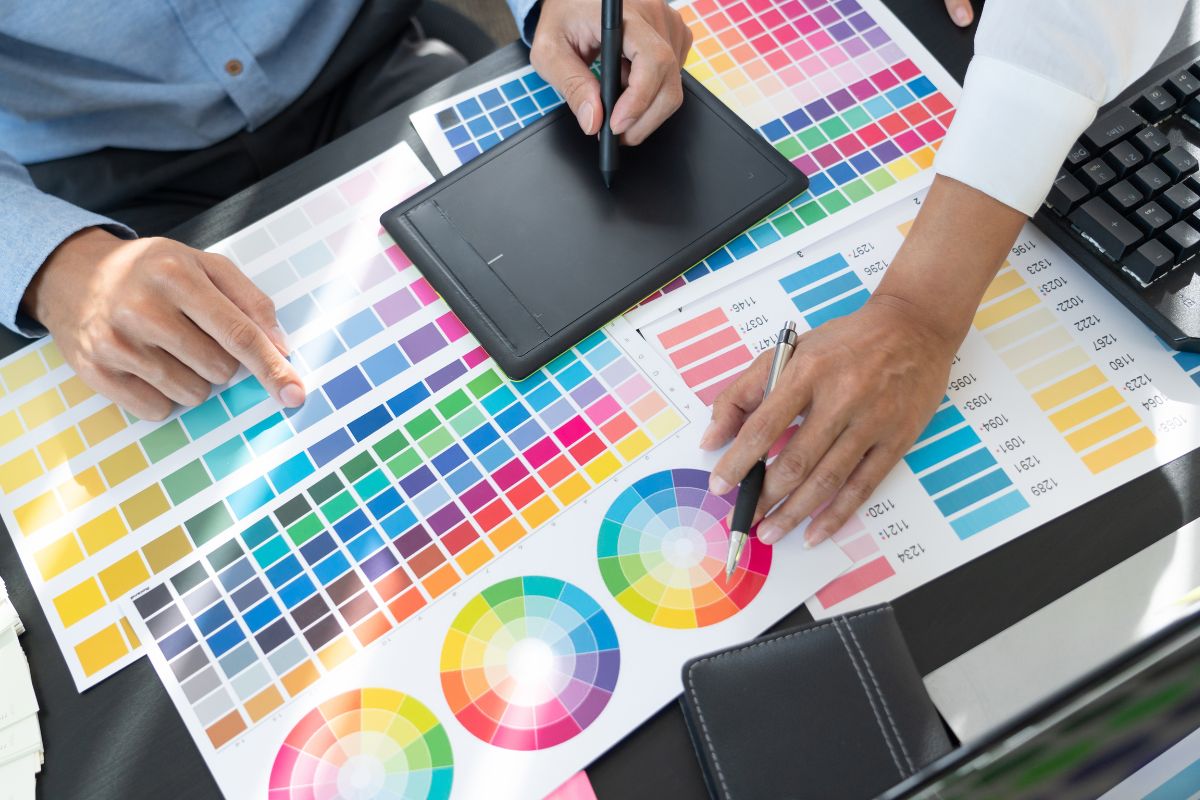
When you’re tasked with applying color in design, two crucial areas you must consider are the creation of a cohesive color palette and the application of color theory to ensure your design communicates effectively.
Color Palette Creation
Designers frequently start a project by developing a color palette that will define a brand’s identity and ensure color matching across various media. As part of your palette creation, you might use tools like the Pantone Matching System to find exact shades. Analogous palettes, which consist of colors next to each other on the color wheel, create a harmonious look, while complementary palettes, using colors opposite each other, offer a bold and vibrant contrast. Triadic palettes rely on three evenly spaced colors around the color wheel, providing a balanced but dynamic aesthetic.
Design Principles and Color Theory
Color theory helps you understand the relationship between colors and the psychological impacts they may have. Complementary colors, for example, are across from each other on the color wheel and can make each other stand out when used together. Conversely, analogous colors are side by side and blend smoothly. Applying these principles promotes visual harmony in design and can influence the viewer’s perception, setting the mood or tone for the user’s experience with the design. Engaging with these concepts is essential for creating visually appealing and effective designs.
Practical Applications
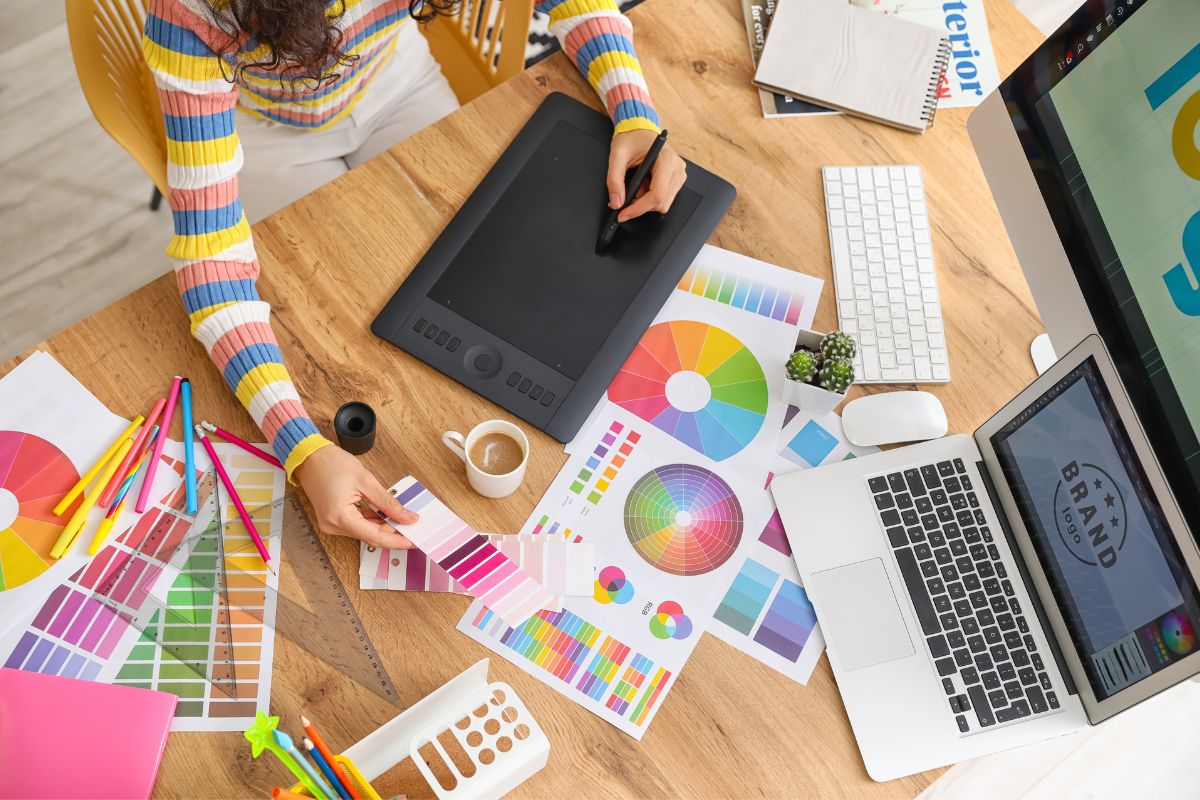
Converting Pantone to Hex is crucial for maintaining color consistency across various media. This process ensures that your brand identity is represented accurately, whether in digital or print format.
Brand and Marketing
In branding and marketing, color consistency is critical. Your ability to match the Pantone Matching System to hex values allows for accurate representation on digital platforms. For marketers, this ensures that the colors your customers see online closely align with physical products or branding materials, upholding the American society’s perception of your brand identity.
Design and Fashion Industries
For those in the design and fashion industries, converting Pantone to hex codes is an integral part of the design process. This enables fashion designers and graphic design professionals to select precise colors for their creations and to share these selections with colleagues across the world with confidence that the colors will remain true to their original intent.
Architectural Applications
Interior designers and architects often use Pantone colors to specify paint and finishes. By converting these colors to hex values, professionals in architecture can create digital mockups that reflect the true colors that will be used in the physical spaces, providing a more accurate visualization for clients.
Commercial Printing and Production
In commercial printing and production, color matching is vital. When you convert Pantone to hex, you ensure that the colors used in digital proofs match the final Pantone colors that will appear in printed materials. This is essential for maintaining consistency in packaging and promotional materials, which are often the first point of contact between your brand and potential customers.
Optimizing for Digital Media
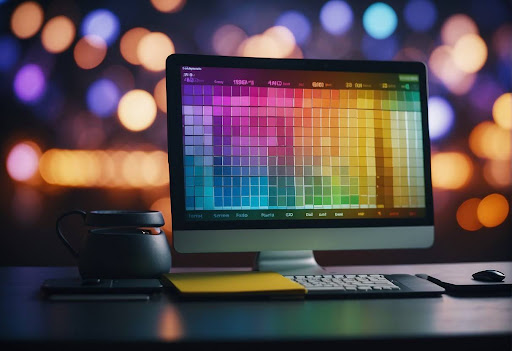
When you’re transitioning colors from print to digital formats, understanding how to convert Pantone colors to hexadecimal (hex) values is critical. Hex values are used in web design and digital media to ensure color consistency across various platforms.
Convert Pantone to Hex:
- Start by identifying your Pantone color.
- Use an online conversion tool or reference guide that provides the closest hex equivalent.
- Since exact matches are rare due to differences in color gamuts, choose a hex color that visually matches as closely as possible when displayed on digital devices.
Web Design Considerations:
- Consistency: Verify that the hex colors you choose look consistent across different screens and devices.
- Accessibility: Ensure there is enough contrast between text and backgrounds, particularly when using light hues and pastels.
Tips for Light Hues:
- Light shades can be tricky. They may appear washed out or too bright, depending on the display.
- Adjust the saturation and brightness of the hex value to achieve the desired effect, making sure it complements the overall design.
- Always test on various screens to confirm the hex color maintains the integrity of the original Pantone shade.
In summary, when optimizing for digital media, aim for consistency and accessibility. Your web design should seamlessly incorporate hex colors that represent your brand’s Pantone choices, keeping a mindful eye on how these colors look in digital applications.
Frequently Asked Questions
Converting Pantone to HEX is a common task in design processes, ensuring color consistency across different mediums. This section addresses your questions on how it’s done.
What methods are available for transforming Pantone colors into HEX format?
There are several methods to convert Pantone colors to HEX format. This involves using dedicated software like Adobe Photoshop or Illustrator, color conversion charts, or online tools which provide a platform to input Pantone colors and receive the approximate HEX value.
Which online tools are recommended for accurately converting Pantone to HEX codes?
There are online tools such as Pantone to HEX converters which can provide accurate conversions. Websites like ColorHexa offer this service and can generate accurate HEX values for Pantone colors.
Can Adobe Photoshop be used to convert Pantone colors to HEX, and if so, how?
Yes, Adobe Photoshop can be utilized to convert Pantone colors to HEX. To do this, add the Pantone color to your Photoshop document, select the color with the eyedropper tool, and then view the color’s HEX code in the color panel.
Are there any free resources for converting Pantone to HEX values reliably?
Yes, free resources for converting Pantone to HEX values include online color conversion tools and Pantone color charts that can be downloaded from various design-related websites.
How can one find corresponding HEX codes for Pantone colors?
To find corresponding HEX codes for Pantone colors, you can use a Pantone color bridge guide or input the Pantone color into an online conversion tool which will display the matching HEX code.
What is the process for converting HEX color codes to Pantone equivalents?
To convert HEX color codes to Pantone equivalents, you can use an online tool where you enter the HEX value, and it provides the closest Pantone match or use a physical Pantone color bridge guide to manually find the closest match.

